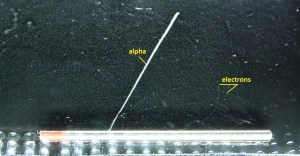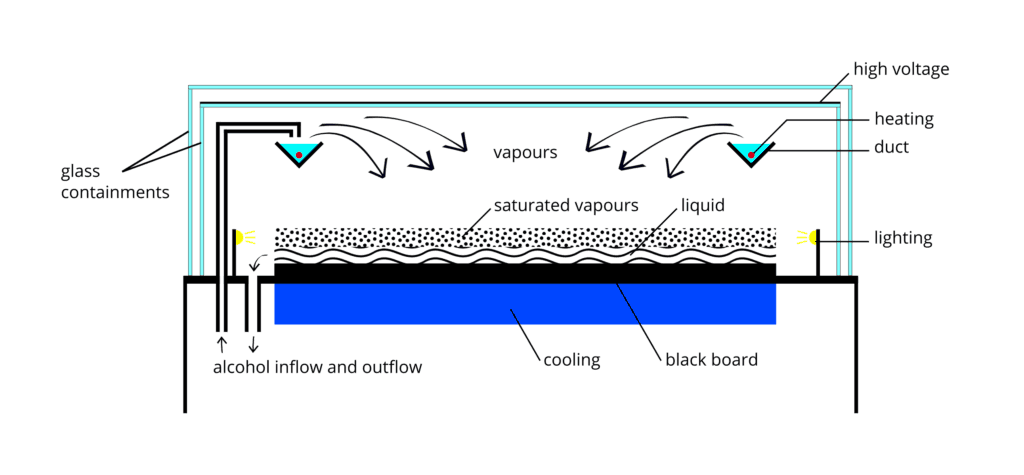
Source: wikipedia.org
Cloud chambers, also known as Wilson cloud chambers, are particle detectors essential devices in early nuclear and particle physics research. Cloud chambers, one of the most simple instruments to study elementary particles, have been substituted by more modern detectors in actual research, but they remain a very interesting pedagogical apparatus.
Cloud Chamber – Principle of Operation
The fundamental principle behind them is the supersaturation of a vapor substance, a state in which the air, or any other gas, contains more vapor of that substance than it can hold in a stable equilibrium. An energetic charged particle (for example, an alpha or beta particle) interacts with the vapor mixture. It creates a track of ions, which under supersaturation conditions act as condensation nuclei around which a mist-like trail of small droplets forms if the gas mixture is at the point of condensation.

These droplets are visible as a “cloud” track that persist for several seconds while the droplets fall through the vapor. The condensation of the vapor on these nuclei allows visual identification of the trajectories of the particles, leading to a straightforward study of their properties. The air inside the sealed device was saturated with water vapor in Wilson’s original chamber. Then a diaphragm was used to expand the air inside the chamber (adiabatic expansion), cooling the air and condensing water vapor. Hence the name expansion cloud chamber is used. The first antiparticle, the positron, the muon, and the first strange particle, the kaon, were identified using a cloud chamber.